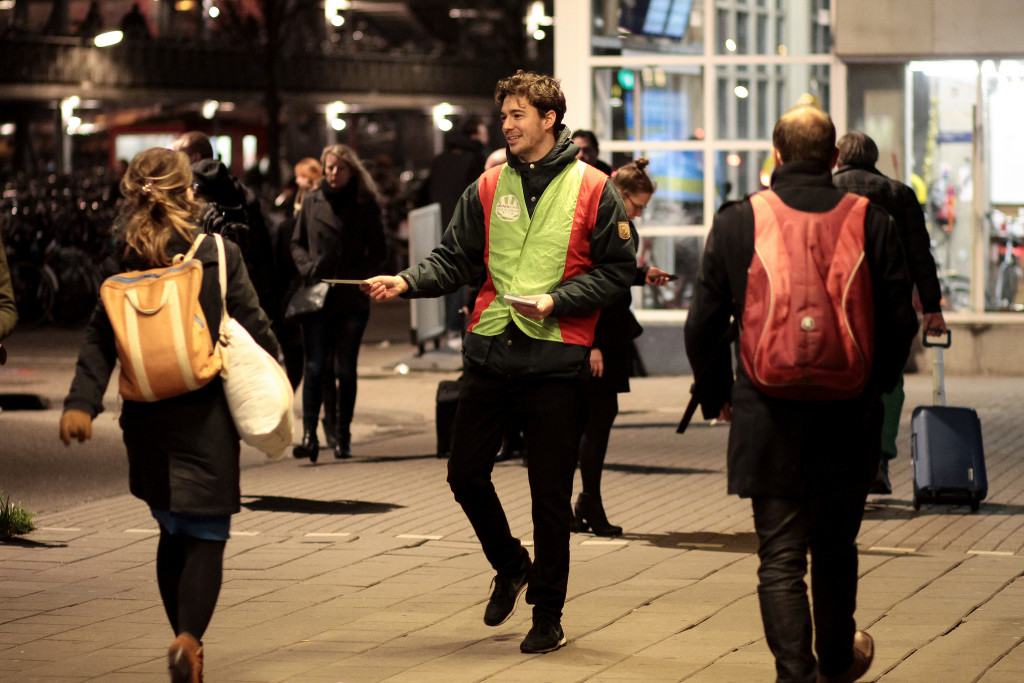Dutch Greens face temptation of joining pro-austerity coalition

Following their success in the March 15th Dutch parliamentary elections, left-wing green party GroenLinks are in talks with four other parties to form the next coalition government. The talks are led by current Prime Minister Mark Rutter, whose People’s Party for Freedom and Democracy (VVD) emerged as the largest party, albeit with reduced representation.
Talks are being facilitated by Edith Schippers, a health minister in the current government. She will most likely appoint Rutte as formateur with the right to form a coalition. The fragmented results of the elections will force him to look at the formation of a coalition of at least four parties. Alongside his centre-right VVD, Rutte will tap the Christian Democratic Appeal (CDA), the socially and economically liberal Democrats 66, and GroenLinks. GroenLinks leader, Jesse Klaver, will now participate in negotiation where cabinet positions are doled out and a policy platform formulated ahead of a possible coalition agreement.
Having risen from the nadir of their 2012 result, GroenLinks will see a potential role in government as a vindication of a well fought election campaign. They increased their representation in the lower house of the Dutch legislature from 4 to 14. Klaver holds ambitions for the top job, and whilst this may be some way off, participation in government could be seen as important experience for him and the party if they are to play a bigger role in future governments.
However, GroenLinks are the odd party out in the coalition talks. The VVD are a centre-right liberal party in line with the mainstream centre-right in Europe. They implemented harsh austerity policies between 2012-17 and their rhetoric on migration and Islam has drifted rightwards to head off the far-right Geert Wilders and his Party for Freedom (PVV). The CDA are a classical Christian democratic party with a centre-right platform now very similar to the VVD.
One the other hand GroenLinks advocate a left ecologism and campaigned in favour of immigration and multiculturalism during the election campaign. On this second position they were joined by the socially liberal Democrats 66, however Democrats 66 are also liberal on economic policy and can comfortably adopt the austerity politics of the VVD and CDA.
As a result, the four party coalition will be a centre right coalition even with GroenLinks involvement, and will continue the austerity and rightwards shift of the last government. GroenLinks seem an odd 4th party in this coalition but the reality is that possible alternatives are not practical. The Labour Party (PvdA) which was the junior coalition partner in the previous government is likely to need to lick the wounds of a once in a generation defeat (they lost 29 of 38 seats) in opposition. The Christian democratic Christian Union have only five seats, which would produce a vulnerable majority of 76 in the 150 seat House of Representatives. The PVV, who are the second largest party, are also not an option as Rutte categorically ruled out working with Wilders during the election campaign.
All of which leaves GroenLinks with an opportunity to enter government. What impact on policy they would have remains to be seen, but governing is their long term objective and could bring results. Nonetheless there are risks in entering a coalition which, overall, will not reflect GroenLink’s policies or values.
First, the destruction of the PvdA shows that entering a coalition can be lethal for the junior partner. Accepting austerity lost the PvdA support, and this is something both GroenLinks and the Democrats 66 benefited from. If the PvdA relaunch themselves following a period in opposition, voters who defected in 2017 may return, leaving GroenLinks stranded.
Second, it also makes the far-right PVV as the credible voice of opposition to the centre-right government. The PvdA is in disgrace and too weak to mount immediate opposition from the left. The Socialist Party also has no momentum, having lost a seat at the election. In any case it is dubious on issues of migration and Islam anyway, with some members having adopted PVV rhetoric during the campaign.
Though there are many inspiring opposition figures, such as anti-racist politician Sylvana Simons and her party Artikel 1, the pro-multicultural splinter from the PvdA – Denk, and the Party for Animals, they are too small to mount a concerted opposition. In opposition GroenLinks could act as a rallying point, having built up credibility during the election. This would return them to a position they had during a successful period in the 1990s where the party led the opposition.
Coalition negotiations in the Netherlands can take many weeks. It took 49 days after the last election and 127 the one before that. So, we will have to see what approach GroenLinks decide to take. Leaving the opposition to the centre-right to the far-right is a big risk, even if you do so to enter government and directly affect policy and governance. Whatever the decision it is a positive for green politics in Europe that they have this dilemma.




Is there the same opportunity for a “confidence and supply” arrangement (rather than formal coalition) that was being suggested before the 2015 election in UK?
I can’t see how the Greens could go into coalition – it would be a betrayal of their voters. They might be able to have a small influence on policy, smoothing off a rough edge here and there, but that’s not what voters voted for.
Better to stay principled.